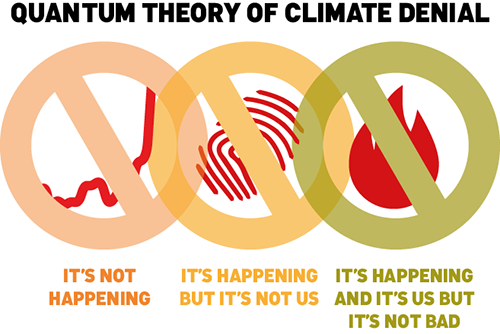
When you get down to the atomic level, the universe gets weird. Austrian physicist Erwin Schrödinger visualized the funkiness of the atomic world with a thought experiment, famously involving Schrödinger's cat. Maybe he thought the idea would go viral if it included a kitten.
Imagine you have some radioactive material that may or may not decay. Quantum mechanics says that if no one is observing it, the radioactive material is simultaneously in both the decaying and non-decaying states. Only when you observe the material does it collapse into one state or the other.
To illustrate how weird this is, Schrödinger imagined placing the radioactive material in a box, connected to a Geiger counter. Also in the box is a cat. If the radioactive material decays, a bottle of poison is smashed, and the cat dies. If there is no decay, then the cat lives. According to quantum theory, until the box is opened, the cat is simultaneously dead and alive. Schrödinger's cat tells us that what goes on at the microscopic level makes little sense when applied to everyday experience.

Similar nonsensical behavior happens with people who deny the scientific consensus that humans are causing global warming. There are various states of climate denial, with some states contradicting others. For example, some believe global warming is not happening. Others believe global warming is happening but is not caused by humans. Others believe humans are causing global warming but that the impacts won't be bad.
Now, it's perfectly understandable for a community of people to hold mutually inconsistent beliefs. But can one person hold three inconsistent beliefs at the same time? Can a person argue that global warming is not happening, then smoothly transition to arguing that global warming is happening but is caused by something else?
They can, and they do. We see it in the blogosphere all the time. One day a blogger claims that global warming stopped years ago. Next they blame the (previously nonexistent) global warming on the sun. Before long they're back to denying there's a problem at all.
There's a psychological reason for this hovering between states of denial. People who believe in one state of denial are more likely to believe in other states of denial. If you deny one aspect of climate science, odds are you deny other parts (or all of it). In for a penny, in for a pound.
How do we explain this weird, counterintuitive phenomenon? It can be explained by the "quantum theory of climate denial." This theory holds that climate deniers exist in a fuzzy quantum state of denial, simultaneously rejecting many or all aspects of climate science.

Apply a stimulus (for example, show them some scientific evidence) and they collapse into one of the three states of denial. This enables a denier to exist in one state of denial, then transition to a contradictory state, then jump back into the first state of denial again.
Just like quantum theory in general, the quantum theory of climate denial flies in the face of common sense. There is an expectation that over time, deniers will gradually move from "climate change is not happening" toward the "climate change is not going to be bad" end of the spectrum. But in the case of those producing climate misinformation, the data say otherwise.
In one study scientists examined 203 climate-change articles authored by by conservative columnists from 2007 to 2010. The most common type of climate myths came under the "it's not happening" category. In fact, over the period of analysis, the proportion of "not happening" myths increased.
Posted by John Cook on Wednesday, 30 April, 2014
 |
The Skeptical Science website by Skeptical Science is licensed under a Creative Commons Attribution 3.0 Unported License. |